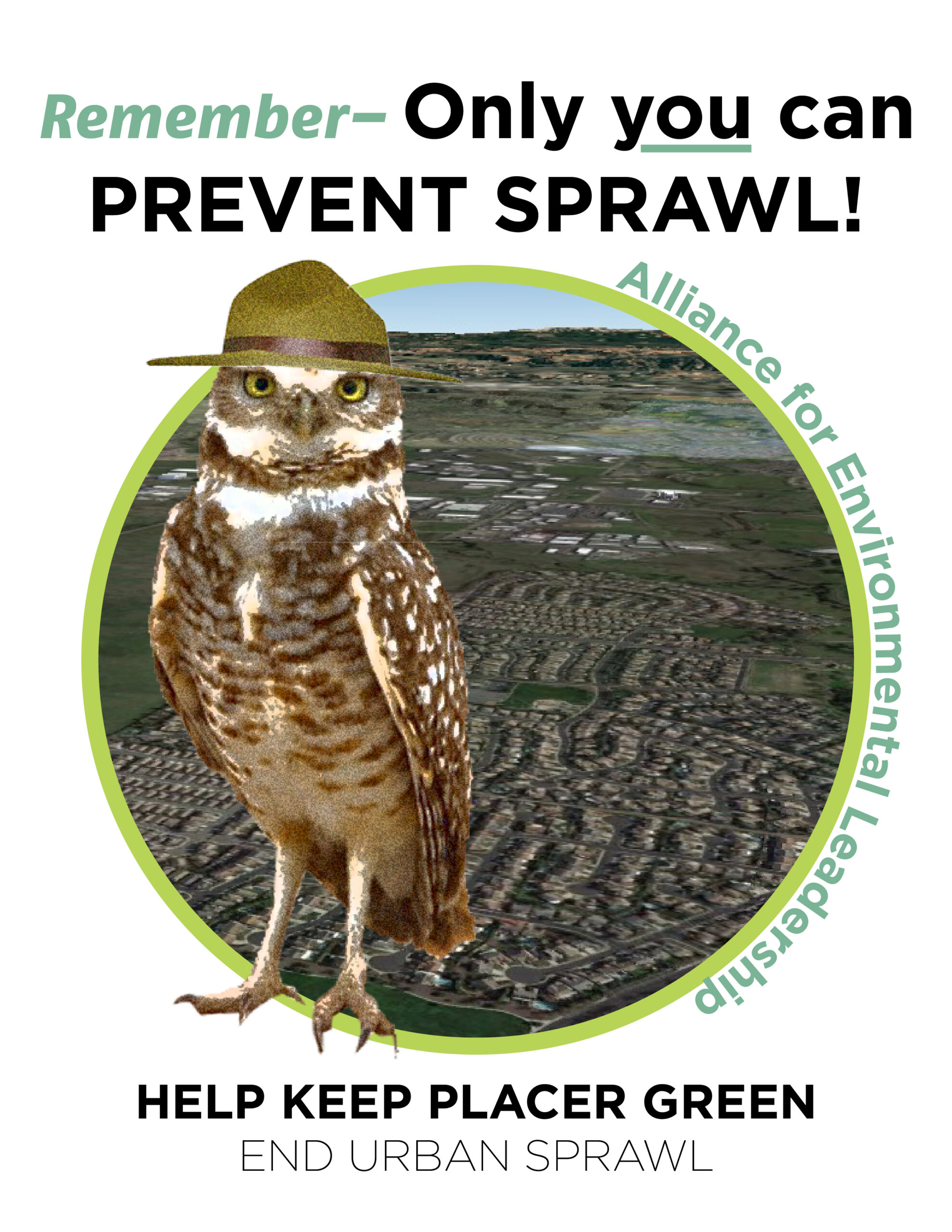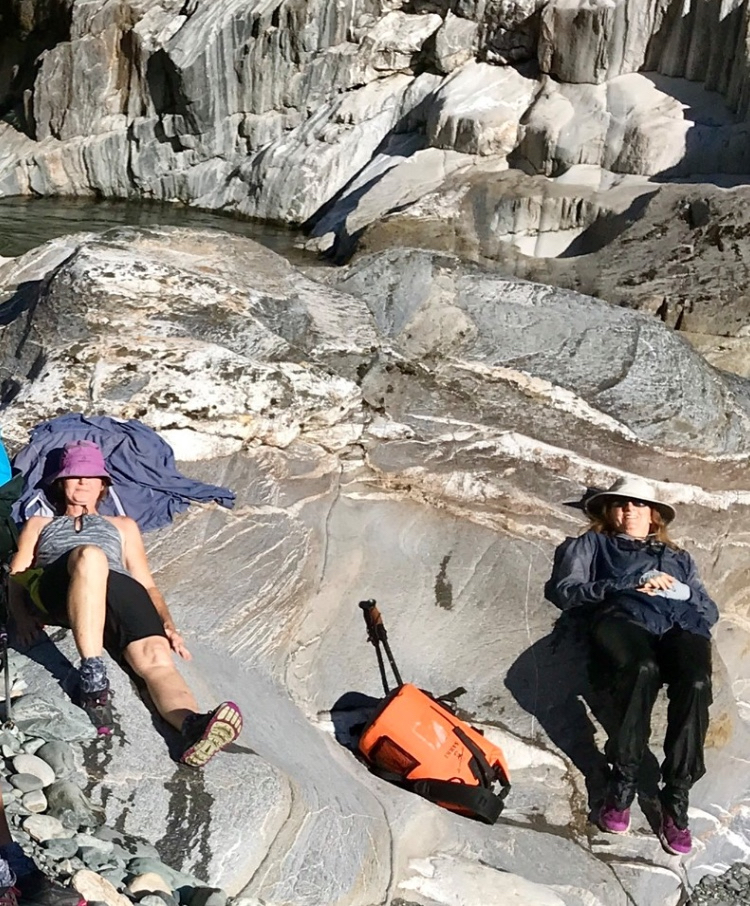January 5, 2021
Dear Friends and Aligned Organizations:
ACTION ALERT:
Please write letters to inform the Central Region Water Quality Control Board about environmental threats the Amoruso and Carvana development projects pose to water resources, fisheries, endangered species, public health and safety in Placer County and beyond. Citizens’ comments are due Jan. 8 and Jan. 19 for the Amoruso and Carvana projects, respectively. The Water Board’s public hearing on Feb. 18/19 will be accessible via Zoom.
1) Amoruso Ranch: the 649 acre primarily single family sprawl, new “community” on carbon sequestering wetlands and farmland. The Amoruso Ranch was recently annexed into the City of Roseville, and
2) Carvana (Coastal Partners, LLC.): a 190,000 sq. ft. automobile repair, 10,500 car resale yard and trucking center with parking for 850 employees proposed on 111.6 acres of grassland, vernal pools and wetlands, also in west Placer near the Thunder Valley Casino.
Written comments from the public are due on Amoruso on Jan. 8 and on Carvana on Jan. 19 by 5:00 PM.
A public hearing on both projects is scheduled for the Central Region Water Quality Control Board’s February 18/19, 2021 meeting. The links to the meetings are below.
The California State Water Resources Control Boards’ job is to preserve, enhance and restore the quality of California’s water resources and drinking water for the protection of the environment, public health and all beneficial uses and to ensure proper allocation of water resources and efficient use under the Clean Water Act. A development project may be approved at the local government level, but may not proceed to disturb the site, pending issuance of a 401 Permit from the SWQCB.
WRITE LETTERS TO:
Lynn Coster, Senior Environmental Scientist at Lynn.Coster@waterboards.ca.gov
Greg Hendricks, Environmental Scientist at Greg.Hendricks@waterboards.ca.gov
Leah Fisher, Project Manager, at leah.m.fisher@usace.army.mil
WHAT TO SAY:
Explain that the Central Region Water Quality Control Board (CRWQCB) should deny the Carvana and Amaruso applicants’ request for a 401 Permit under the Clean Water Act. The environmental analyses of both projects are inadequate and incomplete so that the Board will be unable to certify that the projects will comply with Clean Water Act requirements. The most significant ecological features of the project sites and surrounding lands are vernal pools. Placer County once had 117,289 ares of vernal pool habitat and 75% of that has been destroyed. Wetland delineation maps for the Carvana and Amoruso developments were created by aggregating multiple sourced and are inconsistent with single study maps for the region prepared under a commission by US Fish and Wildlife and Bureau of Reclamation.
In times of severe drought conditions and climate uncertainty, water intensive projects like Carvana and Amoruso should not be considered over the benefit of residents. The projects’ adverse impacts to streams, vernal pools, ponds and other waters individually and cumulatively with other projects approved in the Pleasant Grove/Orchard Creek and Auburn Ravine watersheds require analysis.
The Amoruso Ranch project is a primarily high-cost single-family sprawl and unaffordable to 87% of Placer County’s existing residents. It will, therefore, not meet a community need and will induce growth. Placer County has not caused developers to produce a single unit of affordable housing in recent years.
The EIR for the Amoruso Ranch development is inadequate because:
- The tentative order is vague and incomplete with regard to the project’s mitigation; many mitigation quantities in tables in the tentative order simply say “TBD.”
- The mitigation plan for Amoruso Ranch is undefined and unclear.
- Drainage facilities to handle storm water runoff still need to be constructed.
- Impacts of Placer Parkway have not been addressed.
- The Findings of Fact in the tentative order are vague and truncated.
The Amoruso project EIR anticipated on-site mitigation. Subsequent to the approval of the Placer County Conservation Plan, Amoruso is now proposing to participate instead, in the in lieu fee program which is a significant change that affects aquatic resources has not been evaluated.
The owner/developer for the Carvana project, Coastal Partners, LLC., has not completed an EIR for the project and is attempting to piggyback this 401 permit approval onto the severely flawed Sunset Area Plan/Placer Ranch (SAP/PR) EIR. County, under appeal by a citizens’ group “Placer County Tomorrow,” determined on November 4, 2020 that an EIR was not needed because the project is consistent with the existing Sunset Area Plan/Placer Ranch Specific Plan. However, the SAP/PR EIR never anticipated this intense level of industrial use. Instead, it analyzed a SAP development supporting primary wage-earner jobs and high-tech manufacturing. The SAP/PR EIR is being challenged in Court by the Center for Biological Diversity. 850 low-wage workers will be employed in the Carvana assembly lines and the project makes no provisions for housing these workers. Despite its rapid growth, Placer County has not required developers to produce a single unit of affordable housing in recent years.
Both projects are intensely auto-dependent and will adversely affect public health in what is the 5th worst air quality region in the nation and pose downstream flood and pollution risks. The cumulative impacts to climate and habitat loss/ecosystem services resulting from conversion of a grassland landscape consisting of soils that function as nature’s sponge and support healthy vernal pools to impervious surfaces, has not been considered.
For the benefit of present and future generations, ask the Central Region Water Quality Control Board to deny the 401 Permit applications.
Ask the CRWQCB how these projects conform to the Governor’s Executive Orders for protection of Species Diversity, Farmland, Climate and Open Space.
BACKGROUND AND DETAILS ON KEY ISSUES:
The California State Water Resources Boards preserve, enhance and restore the quality of California’s water resources and drinking water for the protection of the environment, public health and all beneficial uses and to ensure proper allocation of water resources and efficient use under the Clean Water Act. So, a local jurisdiction like Placer County can approve a project, and if it impacts CA’s water resources it must additionally secure a 401 permit before the bulldozers can move in. We are asking the Water Board for the Central Region to deny 401 permits for the Amoruso Ranch and Carvana developments because they fail to conform to Clean Water Act provisions.
Amoruso Ranch Project (WDID No. 5A31CR00520)
The application for a 401 certification is pending before the Central Valley Regional Water Quality Control Board. The CVRWQCB has issued a tentative order for waste discharge requirements. Comments are due January 8, 2020 by 5:00 p.m. The public hearing on the application will take place February 18/19, 2020.
The Amoruso Ranch Project is yet another urban sprawl project on farmland in West Placer. The 649 acre green fields and wetland site was recently annexed to the City of Roseville following preparation of an EIR in 2016. The project is located south of West Sunset Boulevard approximately 1.5 miles west of Fiddyment Road. The proposed project will result in the development of a mix of uses, including 337 acres of low, medium and high density residential land developed with 2,827 dwelling units. The land use plan also includes three commercial parcels totaling 51 acres, a 9.6-acre elementary school site, seven neighborhood parks, and a 3-acre fire station/public facilities site.
If built as proposed, the project will have permanent impacts on nearly 14 acres of aquatic resources, including vernal pool, wetland, and streambed habitat. The Central Valley Regional Water Quality Control Board (“Central Valley Water Board”) is considering whether to grant the project proponent’s application for a Section 401 water quality certification for Amoruso Ranch. The Central Valley Water Board issued a tentative Waste Discharge Requirements Order for the project and will hold a public hearing on the matter during the February 18/19, 2021 Central Valley Water Board meeting. The full text of the order can be found on the Central Valley Water Board’s website at Central Valley Water Board’s Tentative Orders web page (https://www.waterboards.ca.gov/centralvalley/board_decisions/tentative_orders/index.html) under the heading of “Discharger-Specific Orders for Future Regional Board Meetings.” The following issues have been identified:
The tentative Waste Discharge Requirements Order does not sufficiently address compensatory mitigation. The Board is required to consider a project’s proposed mitigation measures prior to issuing a 401 Certification and accompanying Waste Discharge Requirements Order. The tentative order is vague and incomplete with regard to the project’s mitigation; many mitigation quantities in tables in the tentative order simply say “TBD.” The public cannot meaningfully comment on the tentative order unless there is sufficient information about the mitigation measures and the Board’s analysis thereof. The Board should not finalize the tentative order until the public has had the opportunity to comment on the full scope of the mitigations proposed.
The mitigation plan for Amoruso Ranch is undefined and unclear. The 401 Certification application and 404 Permit applications both indicated that Amoruso Ranch would mitigate impacts to vernal pools, wetlands, and other waters of the U.S. on three off-site mitigation sites (Mourier East, Mourier West, and Skover) located west of the Amoruso Ranch project area. The project’s Wetland Mitigation Proposal and its supporting analysis, as well as the Mitigation Monitoring and Reporting Program, are based on these three properties being the location of off-site mitigation. These sites were thoroughly analyzed and selected for off-site mitigation due to their close proximity to the project site and potential to preserve vernal pool connectivity in the area. However, a December 2019 letter from the applicant indicates that the applicant now intends to mitigate impacts to waters of the U.S. through the Western Placer County In-Lieu Fee (WPILF) program. It is not clear that a sufficient analysis has been done to determine whether the new off-site mitigation locations are in the same watershed as the Amoruso project site or if they are suitable for recreation of vernal pools/vernal pool fairy shrimp habitat, or for relocation of dwarf downingia (Downingia pusilla). It is required under the Procedures for Discharges of Dredged or Fill Material to Waters of the State that compensatory mitigation requirements must be commensurate with the amount and type of impact that is associated with a particular Order. There has been no analysis or discussion of whether the new mitigation plan which uses the WPILF is commensurate with Amoruso Ranch’s impacts. The Board should not issue the Waste Discharge Requirements Order until a new Wetland Mitigation Plan related to the WPILF is provided.
Impacts of Placer Parkway have not been addressed. Placer Parkway, though designated as “not a part of this project,” is a foreseeable and imminent effect of Amoruso Ranch. The proposed footprint of this parkway covers many acres of vernal pools, seasonal wetlands, and seasonal wetland swales within the Amoruso Ranch project site. The impacts of the Placer Parkway have not yet been analyzed, despite the fact that the parkway is going to have unknown effects to the hydrology contributing to the vernal pool complex on the site.
Drainage facilities to handle storm water runoff still need to be constructed. Cumulative development in the Roseville area, which includes the Pleasant Grove Creek watershed, will increase the amount of impervious surfaces which could increase peak stormwater runoff flows and increase flood elevations. Amoruso Ranch plan currently relies on drainage facilities that are not yet constructed or will require additional construction – the Regional Pleasant Grove Retention Basin Facility, Reason Farms Regional Retention Basin, and drainage in the AI Johnson Wildlife area. Better analysis of the impacts of stormwater runoff and drainage should be performed.
The Findings of Fact in the tentative order are vague and truncated. A meager 4 pages of findings of facts were provided as Attachment C to the tentative order. The findings lump together all of the supposed impacts and mitigation measures. The Board should provide more thorough findings of fact that detail the specific impacts of the project and the precise mitigation measures that are proposed for each impact, to show that the Board’s findings truly support the issuance of the order.
“Carvana” Vehicle Inspection Center Project (WDID No. 5A31CR00535)
The application for a 401 certification is pending before the Central Valley Regional Water Quality Control Board. The CVRWQCB has issued a tentative order for waste discharge requirements. The tentative order is attached. Comments are due January 19, 2020 by 5:00 p.m. The public hearing on the application will take place February 18/19, 2020.
The Carvana “Placer Vehicle Inspection Center” attempts to give credibility to the intensive conversion of an 111 acre wetland site for an auto-repair and replacement use, refueling facility and employee parking (850 employees) and trucking yard (the Carvana business model has cars delivered) and 190,000 repair building. Carvana will remove and replace oils, fuels and solvents on a four track assembly line. Surface waste water consisting of detergents, solvents and oils will be held in ponds excavated into this sensitive environment.
The private developer has not completed an EIR for the project and is attempting to piggyback this 401 permit approval onto the severely flawed Sunset Area Plan/Placer Ranch (SAP/PR) EIR. County, under appeal by a citizens’ group “Placer County Tomorrow”, determined on November 4, 2020 that an EIR was not needed because the project is consistent with the existing Sunset Area Plan/Placer Ranch Specific Plan. However, the SAP/PR EIR never anticipated this intense level of industrial use. Instead, it analyzed a SAP development supporting primary wage-earner jobs and high tech manufacturing. The SAP/PR EIR is being challenged in Court by Center for Biological Diversity.
We want the Water Board to determine the specific water usage and hydrologic impacts within the SAP EIR are attributable to Carvana since it was known prior to EIR certification and project approval. The Carvana project’s water use, the use and storage of oils and solvents for a 111+ acre repair center operating 18 hours a day and maintaining an inventory of 10,500 cars poses significant environmental and health risk – not the least of which is light pollution affecting nocturnal hunters in four mitigation banks in the immediate vicinity. The potential for spills, flood and pollution of storm-water potentially carrying oils, detergents, and solvents from this high-intensity use facility is a public health risk.
A full EIR analysis of the Carvana Project is required to determine how the the proposed destruction of the vernal pool habitat and surface and groundwater systems will itself and cumulatively, (with the City of Lincoln’s Villages, Amoruso Ranch, Placer Vineyards, Sunset Area Plan and Placer Ranch projects) impact the quality and supply of California’s water resources, cause flood and habitat and fisheries degradation.
The OSHA website details persistent violations by Carvana to the Water Quality Act. Urge the CRWQCB to require a project level EIR to determine if wastewater retention, discharges and spills will adversely impact surface water, the environment, species and public health.
Cumulative Impacts
The project being considered by the CVWQCB are but two of many massive urban sprawl developments approved or pending for western Placer County’s grasslands. The impact of wholesale conversion of many tens of thousands of acres of grasslands has not been considered in a cumulative or holistic way. The impacts to climate being a key issue. Additionally, the developments, by virtue of their proposed land use (low density sprawl and associated swimming pools and landscape and auto repair/refurbishing/sales maintaining a 10,500 car inventory) will create an unprecedented local demand for treated water.
Water Usage – In this environment of uncertainty due to CA’s historical droughts and climate change, the cumulative impacts related to water demand and supply and the ecosystem services related to natural water conservation should be considered by the CRWQCB.
Endangered Species – 14 listed endangered species and ecosystems occur within the Carvana and Amoruso sites. All are proposed to be relocated into the Placer County Placer Conservation Plan area which is already functioning at ecosystem capacity. Additionally, there is scarce empirical evidence that species and habitat “relocation” is successful. The Swainson’s Hawk which travels 10,000 miles to and from Argentina each year, makes the west Placer grasslands its notheran home. Relocation is not an option here. The spade foot toad, burrowing owls and fairy shrimp have specific ecological niches. that cannot be replicated successfully even if there space in the trophic level into which they are proposed to be relocated. The threatened Western Pond turtle will not accept relocation. It will persist in travellingfor its lifetime to its home of origin after relocation and we know turtles are among the most threatened of all major invertebrate groups, with 365 species threatened or already extinct due to destruction of habitat.
Grassland Habitat – The developments will cause disruption to aporox.16,000 acres of Cometa-Fiddyment, Fiddyment-Kaseberry and Alamo-Fiddyment soils which are distinguished by the depth of sponge-like topsoil over clay. During the rain-y season, these fluffy soils become saturated to 40-60% water, moderating runoff and retaining water for slow discharge into the dry season. The sponge-like nature of the soils is an important factor to mitigate flood and a control for fisheries’ needs. Grasslands in the US are disappearing at a rate exceeding the losses of Amazon rainforest, Conversion of grasslands for development compromises the ecological services they provide such as filtering trillions of gallons of water that goes on to be used for drinking water and helps support healthy fisheries in the American and Sacramento Rivers, the Bay Delta and Pacific Ocean. Destruction of grasslands threatens iconic species and natural phenomenon of bird migration. Grassland bird species have declined as much as 80% as have four species of bumble bee – making these critical pollinators at risk of extinction.
Governor’s Executive Orders
The Amoruso Ranch and Carvana projects are inconsistent with the Governor’s Executive Orders for protection of Species Diversity, Farmland, Climate and Open Space.
ZOOM Meeting Details:
The Central Valley Regional Water Quality Control Board (Central Valley Water Board) has prepared tentative Waste Discharge Requirements (WDRs) for fill discharges to waters deemed by the U.S. Army Corps of Engineers to be outside of federal jurisdiction for the Coastal Partners, LLC, Vehicle Inspection Center Project (Project). The Central Valley Water Board is currently soliciting public comments on the tentative Waste Discharge Requirements in accordance with the Notice of Public Hearing to Adopt Tentative Waste Discharge Requirements, which is attached to this notification.
A public hearing concerning this matter will be held during the Central Valley Regional Water Quality Control Board (Central Valley Water Board) meeting scheduled for:
DATE: 18/19 February 2021
TIME: 8:30 a.m.
PLACE: Online Meeting
In accordance with Executive Orders suspending certain provisions of the Bagley-Keene Open Meeting Act in light of the COVID-19 pandemic, this meeting will be conducted as an online meeting only. Please visit our website for information on
How to participate in online meetings at: (https://www.waterboards.ca.gov/centralvalley/board_info/meetings/).
A Public Hearing has been scheduled for the Central Valley Water Board to consider adoption of the tentative Waste Discharge Requirements at its 18/19 February 2021 Board Meeting. Any comments or recommendations you or others may have concerning the tentative Order must be submitted in writing to the Central Valley Water Board office by 5 p.m. on 9 January 2021 for Amoruso and 19 January for Carvana. Written materials submitted after this date and time will not be accepted and will not be incorporated into the administrative record if doing so would prejudice any party. Please note that the tentative documents will receive internal legal and management review during the public comment period.
If you have any questions regarding the tentative WDRs, the scheduling of the Public Hearing, or the above requirements please contact Lynn Coster at (530) 224-2437, Lynn.Coster@waterboards.ca.gov







